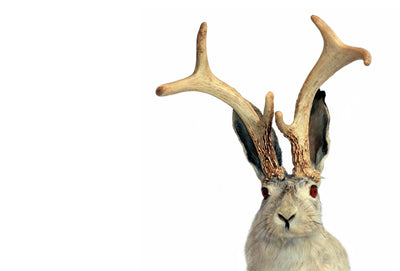Introduction
Known for their loyalty, bravery, and strong constitution, the Rottweiler is a guardian and loyal companion to many families. However, as a large breed, Rottweilers typically have a slightly shorter lifespan of between 8-10 years. Their health is susceptible to a wide range of ailments, and these problems can significantly shorten their lives if they are not detected and dealt with in a timely manner.
Rottweiler Lifespan: Common Health Issues That Shorten Their Lifespan
Understanding these common health issues and through scientific breeding and proactive preventative measures can help your Rottweiler live a longer, healthier life, even reaching the grand old age of 12-14 years. Let's take a look at some of the health hazards that can threaten a Rottweiler's lifespan and how you can create a longer-lasting companionship for them.

1. The Average Lifespan of A Rottweiler
Generally speaking, the lifespan of a Rottweiler is around 8-10 years, but this is not an absolute limit. Scientific dietary management, regular exercise, regular health checkups, and timely medical intervention can buy them a longer life. Some lucky Rottweilers can even live up to 12-14 years old and still look energetic under the careful care of their owners. The key lies in whether we can understand and deal with those “invisible killers” that may threaten their health in advance.
2. Shorten the Life of the Rottweiler Common Health Problems
(1) Joint Diseases: The “Natural Enemy” of Large Dogs
The Rottweiler's large size makes them particularly vulnerable in terms of joint health, and the following joint diseases are of particular concern:
Hip Dysplasia (Dysplasia of the Hip)
Hip dysplasia is a common genetic disorder in which the hip joint fails to develop properly, leading to joint laxity, pain, and even arthritis. Rottweilers are at a higher risk of developing the disease due to their greater weight and more stress on the hip joints. Dogs may show symptoms such as lameness, difficulty walking or reluctance to jump.
PREVENTION AND MANAGEMENT: Choosing a breeding dog that has been screened for health is the first step. Maintaining your dog at a healthy weight, providing joint protectors containing glucosamine and chondroitin, and moderate exercise (avoiding high-intensity jumping) can reduce joint load. Regular x-rays can help detect problems early and provide relief with medication or surgery if necessary.
Elbow Dysplasia (Elbow Dysplasia)
Similar to hip dysplasia, elbow dysplasia causes pain and limping in the elbow, which can eventually lead to arthritis. X-rays are the key to confirming the diagnosis, and treatment options include medication to relieve pain, physical therapy to improve mobility, and, in severe cases, surgery to repair the problem.
Osteochondritis Dissecans (OCD)
OCD is a condition in which the cartilage in the joints develops abnormally, commonly in large dogs. Pieces of cartilage may detach into the joint cavity, causing severe pain and lameness.
Management measures: strict weight control, restriction of high-intensity exercise, reduction of inflammation through medication, and in severe cases, surgery may be required to remove dislodged cartilage fragments.
(2) Heart disease: a hidden threat
Heart problems are a major hidden threat to the health of the Rottweiler, especially the following two congenital diseases:
Aortic Stenosis (narrowing of the aorta)
This disease causes the heart to have difficulty pumping blood due to narrowing of the aortic valve and may show symptoms such as fainting, decreased exercise tolerance or coughing when the dog is about 1 year old. In severe cases, it can be life-threatening. Medication can improve heart function, but some dogs may require surgical intervention.
Subacute Mitral Stenosis (SAS)
SAS can cause obstruction of blood flow to the heart, increasing the burden on the heart and even causing sudden death. Regular heart ultrasound is the key to early detection, and medication can help control the condition and prolong life.
Prevention advice: Choosing puppies with healthy pedigree and regular heart checkups, especially during puppyhood, can effectively reduce the risk.
(3) Cancer: A high risk “silent killer”
Rottweilers have a higher risk of cancer than many other breeds, with the following types of cancer being particularly common:
Osteosarcoma (Osteosarcoma)
Osteosarcoma is a very aggressive form of bone cancer that usually occurs in the extremities and manifests as swelling, pain and lameness. Early diagnosis combined with amputation and chemotherapy can prolong survival, but cure is difficult.
Lymphoma
Lymphoma affects the lymphatic system and symptoms include lethargy, weight loss and fever. Chemotherapy is the mainstay of treatment, and early intervention can significantly improve a dog's quality of life.
Hemangiosarcoma (Hemangiosarcoma)
This cancer often originates in the spleen, liver or heart and progresses rapidly, often spreading by the time it is detected. Surgical removal combined with chemotherapy improves prognosis, but early diagnosis is critical.
Coping strategies: Regular medical check-ups, observation of abnormal behaviors in dogs (e.g. loss of appetite or lumps), and early imaging tests can buy valuable time for treatment.
(4) Obesity: an invisible burden on health
The Rottweiler's sturdy figure makes it easy for people to neglect weight management, but obesity will aggravate the burden on joints and heart and increase the risk of many diseases.
Preventive measures: Provide a nutritionally balanced diet, control snack intake, and maintain a moderate amount of daily exercise, such as walking or light play. Weigh your dog regularly to ensure that it maintains a healthy body shape.
(v) Gastric Dilatation and Verticalization Syndrome (GDV): Acute Fatal Crisis
GDV is a common emergency in deep-chested, narrow-bellied breeds (such as Rottweilers). A distended and twisted stomach causes disruption of the blood supply and can be fatal if left untreated. Symptoms include abdominal distention, unsuccessful vomiting and extreme restlessness.
Preventive advice: Use a small, frequent feeding schedule, avoid strenuous exercise after meals, and consult your veterinarian about the need for prophylactic gastric immobilization surgery if necessary.
(5) Other Health Problems
Hypothyroidism: causes weight gain, lethargy, skin infections and requires lifelong medication.
Entropion: the eyelid rolls in and irritates the cornea, requiring surgical correction for pain relief.
Cranial Cruciate Ligament Rupture (CCL): similar to ACL tears in humans, may lead to claudication, surgery is the mainstay of treatment.
3. How to Extend the Lifespan of A Rottweiler?
The health of a Rottweiler requires the total commitment of its owner, and the following tips will help your fur child live a longer and happier life:
Regular health checkups: Have a comprehensive physical checkup at least once a year. Puppies and older dogs can be checked more frequently to detect potential problems early.
Scientific diet: Choose high-quality dog food and control calorie intake to avoid obesity. Add joint or heart-healthy nutritional supplements if necessary.
Moderate Exercise: Daily walks and play can improve fitness, but avoid high-intensity exercise to protect joints.
Genetic screening: Reduce the risk of genetic disorders by choosing a puppy from a healthy pedigree. Ask the breeder to provide proof of hip and heart screening before purchase.
Prompt treatment: Seek immediate medical attention for any abnormalities (e.g., lameness, loss of appetite) to prevent small problems from turning into big ones.
Rottweilers are loyal companions who guard our homes with endless love and courage. However, their health is vulnerable to problems such as joint disease, heart disease, and cancer. By understanding these common health hazards and taking science-based preventive and management measures, we can strive for a longer life and a better quality of life for our Rottweilers.
Starting from choosing a healthy puppy, to daily dietary management, moderate exercise and regular medical checkups, every step reflects our love and responsibility for our fur kids. Let's reward our Rottweiler's longer companionship with careful care, so that every day of their lives will be full of vigor and joy!
Rottweiler Skin Problems: Causes, Treatment & Prevention for Allergy-Prone Coats
Rottweilers are loved by dog lovers for their imposing physiques and loyal personalities, but as large breeds, their skin is often the “hardest hit” by health problems. From minor itching to serious infections, skin problems not only make dogs uncomfortable, they can also make pet parents anxious. Understanding the causes of Rottweiler skin problems, scientific treatments, and effective preventative measures can help keep your furry child's skin smooth and healthy, free from itching and pain. Let's take a closer look at how to protect your Rottweiler's skin!
1. The Common Causes of Rottweiler Skin Problems
Rottweiler skin problems may be triggered by a variety of factors, the following are several common “behind the scenes”:
(1) Allergic reaction: sensitive “skin radar”
Rottweilers are highly sensitive to environmental and food allergies, which can cause skin problems if they are not careful. Common allergens include:
Environmental allergens: Pollen, dust mites, mold, and even household cleaners can cause your dog's skin to “protest”, manifesting itself in itching, redness, or scratching.
Food allergies: Common ingredients such as chicken, beef, wheat or soy can be the culprits, causing skin redness, swelling or ear infections.
Parasites: Bites from fleas, ticks or mites not only bring itching, but can also trigger atopic dermatitis, making your dog miserable.
(2) Bacterial and fungal infections: “invaders” of the skin
Once a Rottweiler's skin barrier is compromised, bacteria and fungi can take advantage of the situation:
Bacterial skin infections (Pyoderma): manifested by redness, swelling, pustules, itching, and even odor, commonly found in skin folds or areas of excessive scratching.
(b) Fungal infections (e.g. Ringworm): usually characterized by round, red-rimmed patches of hair loss, dogs may aggravate the infection by frequent scratching due to itching.
(3) Genetic and immune problems: a natural “weak link”
Genetic factors and immune system problems may also make the Rottweiler's skin vulnerable:
Atopic Dermatitis: This is a chronic inflammatory skin disease, usually triggered by environmental allergens, which is characterized by persistent itching and redness of the skin and is common on the face, paws and abdomen.
(c) Demodicosis: When helminth mites overpopulate the skin, they can cause scaling, erythema and hair loss, especially in puppies or older dogs with weakened immune systems.
(4) Other causes: the “invisible threats” in life
Nutritional deficiencies: lack of essential fatty acids, vitamins or minerals may lead to dry skin, hair loss and loss of luster.
Damaged skin barrier: Frequent bathing, exposure to harsh chemicals or skin injuries can weaken the skin's natural protective layer, making it easier for bacteria and fungi to invade.
2. The Treatment of Rottweiler Skin Problems
For different skin problems, the treatment methods have their own focus, but the key lies in timely detection and professional intervention:
(1) Treatment of allergic reactions
Allergy is a common culprit of Rottweiler skin problems and treatment requires comprehensive management:
Antihistamines: e.g. Benadryl for quick relief of itching and mild inflammation to make the dog comfortable.
Corticosteroids: e.g. Prednisone, for severe allergic reactions and effective in controlling inflammation, but should be used for short periods of time under veterinary supervision to avoid side effects.
Immunotherapy: After finding out the specific allergens through allergen testing, regular desensitization injections are given to gradually increase the dog's tolerance to the allergens.
Topical care: Use anti-allergy shampoo or ointment to gently clean the skin and relieve itching and redness.
(2) Treatment of bacterial and fungal infections
Infections require targeted medication:
Antibiotics: Oral or topical antibiotics can be effective in clearing bacterial skin infections. Commonly used medications need to be prescribed by your veterinarian.
Antifungal drugs: for fungal infections such as ringworm, oral or topical antifungal drugs such as ketoconazole can be used.
Topical treatments: antibacterial or antifungal sprays and creams can act directly on the affected area to accelerate healing.

(3) Treatment of helminthic mite disease
Helminthic mite disease needs to be treated against the parasite:
Antiparasitic drugs: such as ivermectin, need to be used under the strict guidance of veterinarians to avoid excessive dosage triggering toxicity.
Topical care: anti-mite lotion or ointment can kill the mites directly, with cleaning to keep the skin dry.
(4) Treatment of atopic dermatitis
Atopic dermatitis requires long-term management:
Anti-inflammatory drugs: such as cyclosporine or corticosteroids can effectively control inflammation and relieve itching.
Immunotherapy: Gradually reduce your dog's sensitivity to allergens through regular injections of allergen extracts.
Daily care: Use gentle pet shampoos and moisturizing sprays to keep the skin clean and moisturized and to strengthen the skin barrier.
3. The Prevention of Rottweiler Skin Problems: Preventing Problems Before They Occur
Prevention is always more important than treatment, and the following tricks can help keep Rottweilers away from skin troubles:
(1) Daily care: start with cleaning
Regular bathing: Use a gentle pet-specific shampoo every 2-4 weeks, avoiding human lotions or harsh products. Blow dry thoroughly after bathing to prevent moisture from harboring bacteria.
Deworming protection: Use monthly flea, tick and mite preventative medications to minimize skin problems caused by parasites.
Clean environment: Regularly clean your dog's mattress, toys and living area to reduce the accumulation of allergens such as dust mites and pollen.
(2) Dietary management: Conserve the skin from within
Balanced nutrition: Choose a quality dog food rich in essential fatty acids (such as omega-3 and omega-6), vitamin E and zinc to support skin health.
Food Allergy Testing: If food allergy is suspected, you can test each food individually through the “elimination diet” to identify and avoid allergens such as chicken or wheat.
(3) Reduce allergen exposure
Control outdoor activities: During high pollen season (e.g. spring), reduce the amount of time your dog spends in the grass or flowers, and wipe his body with a wet towel when he comes home.

Noora Skin & Coat Health Supplement
Indoor purification: Use air purifiers to reduce indoor dust mites and pollen and keep the air fresh.
(4) Enhancement of immunity
Regular Exercise: Take moderate daily walks or playtime to maintain your dog's healthy weight and strengthen the immune system.
Nutritional supplementation: Add fish oil, probiotics or vitamin E to support the skin barrier and overall health, as recommended by your veterinarian.
4. Summarize: Make Your Rottweiler's Skin Glow Again
Skin problems in Rottweilers can be triggered by a variety of causes such as allergies, infections, genetics or nutritional imbalances, but they can be completely controlled or even prevented with scientific treatment and careful daily care. From anti-allergy medications to topical treatments to a balanced diet and environmental management, every step of the way adds to your dog's skin health. If your Rottweiler begins to scratch frequently, develop red spots or lose hair, don't ignore it and consult your veterinarian for professional diagnosis and treatment.
As pet parents, our love and patience are the greatest guarantee of a healthy Rottweiler. Let's use scientific prevention and meticulous care to help them get rid of their skin troubles and show off their smooth, shiny coats and energetic style!
Common Health Issues in Rottweilers: From Hip Dysplasia to Lifespan-Impact Conditions
The Rottweiler is beloved by dog lovers for its imposing physique, loyal character and fearless guarding instincts. However, as a large breed, Rottweilers are susceptible to a wide range of health problems that not only affect their quality of life, but can also shorten their lifespan, which averages between 8-10 years. The good news is that with scientific husbandry, regular health checkups, and prompt medical intervention, many Rottweilers can live to be 12-14 years old and beyond. Understanding these common health issues and taking proactive preventative measures is the key to a long and healthy life for your fur child. Let's take a look at some of the health challenges Rottweilers can face and how you can “protect” them!
1. The Average Lifespan of A Rottweiler
Rottweilers usually live 8-10 years, but this is not a fixed upper limit. Under the careful care of their owners, many Rottweilers can break through this range and live to be 12-14 years old, still maintaining their energetic appearance. A scientific diet, moderate exercise, regular medical checkups, and prompt intervention for potential health problems are all secrets to extending their lifespan. Next, we will delve into the common diseases that can threaten the health of Rottweilers.
2. Common Health Problems in Rottweilers
(1) Hip Dysplasia: the “invisible killer” of joints
Hip Dysplasia is a common hereditary disease in which the hip joint fails to develop properly, leading to joint laxity and pain, which may eventually lead to arthritis. Rottweilers are at higher risk due to their larger size, which puts more pressure on the hip joint.
Symptoms: Weakness in the hind legs, lameness, reluctance to jump or climb stairs, swollen joints.
Prevention and Management: Choosing a breeding dog that has been screened for hips is the first step. Maintaining your dog at a healthy weight, supplementing with glucosamine and chondroitin, and exercising moderately (avoiding high-intensity activities) can reduce the burden on the joints. Regular x-rays can help with early detection, and surgery may be needed in severe cases.
(2) Elbow Dysplasia: A “sore spot” in the forelimb
Similar to hip dysplasia, elbow dysplasia affects the joints of the forelimb and can lead to pain, limping and arthritis.
Symptoms: limp, swelling of the joint, reluctance to move.
Prevention and management: After the diagnosis is confirmed by X-ray, treatment includes medication to relieve pain, physical therapy to improve mobility, and surgery may be needed in severe cases.
(3) Osteochondritis Dissecans (OCD): “defection” of articular cartilage
Osteochondritis Dissecans is a common joint disease in large dogs. Abnormal cartilage development may cause fragments to break off and enter the joint cavity, causing severe pain.
Symptoms: lameness, swollen joints, reluctance to move.
Prevention and management: Weight control, limiting high-intensity exercise, and supplementation with joint protectors. In severe cases, surgery can remove the dislodged cartilage and relieve pain.
(4) Aortic Stenosis: A “stress test” for the heart
Aortic stenosis is a congenital heart condition in which the narrowing of the aortic valve forces the heart to pump harder, and symptoms may appear around the age of one.
Symptoms: Fainting, decreased exercise tolerance, coughing, shortness of breath.
Prevention and management: Regular heart ultrasound can lead to early detection, medication can improve heart function, and surgery may be needed in severe cases.
(5) Subacute mitral stenosis (SAS): an “invisible threat” to the heart
SAS causes obstruction of blood flow to the heart, which increases the burden on the heart and may lead to sudden death in severe cases.
Symptoms: Fainting, difficulty in exercising, shortness of breath.
Prevention and management: Regular cardiac checkups are key, and medications can control the condition and reduce the risk.
(6) Cancer: A high incidence of “silent killer”
Rottweilers are at a higher risk of developing cancer, and the following types of cancer are especially important to be aware of:
Osteosarcoma (Osteosarcoma): an aggressive bone cancer that often affects the limbs and manifests as swelling, pain and lameness. Early amputation combined with chemotherapy can prolong life, but cure is difficult.
Lymphoma: affecting the lymphatic system, symptoms include lethargy, weight loss, and fever. Chemotherapy can significantly improve quality of life.
Hemangiosarcoma (Hemangiosarcoma): originates in the spleen, liver, or heart and progresses rapidly. Early surgery and chemotherapy may improve prognosis.
Prevention and management: Regular physical examination, observation of abnormalities (e.g., mass or decreased appetite), and early imaging.
(7) Obesity: the “invisible burden” of health
Rottweiler's sturdy body is easy for people to ignore weight management, but obesity will aggravate the burden on the joints and heart, increasing the risk of a variety of diseases.
Symptoms: overweight, slow movement, difficulty in breathing.
Prevention and management: Provide a balanced diet, control snacks, maintain a moderate amount of daily exercise and weigh regularly.
(8) Gastric dilatation and torsion syndrome (GDV): acute fatal crisis
GDV is a common emergency in deep-chested, narrow-bellied breeds. The stomach expands and twists and may cut off the blood supply, which is life-threatening.
Symptoms: abdominal distension, unsuccessful vomiting, shortness of breath, weakness.
Prevention and management: Eat smaller meals, avoid strenuous exercise after meals, seek immediate medical attention when symptoms are detected, and consider prophylactic gastric fixation surgery if necessary.
(9) Hypothyroidism: a metabolic “speed bump”
Hypothyroidism slows down metabolism and affects general health.
Symptoms: Weight gain, lethargy, dry skin, hair loss, ear infections.
Prevention and management: After blood tests confirm the diagnosis, lifelong medication can effectively control the condition.

(10) Entropion: The “invisible assassin” of the eye
Entropion causes the eyelashes to rub against the cornea, causing pain and infection.
Symptoms: tearing, redness and swelling of the eye, frequent blinking.
Prevention and management: Surgery to correct the position of the eyelid and improve the dog's comfort.
(xi) Cranial Cruciate Ligament Rupture (CCL): A “stumbling block” to locomotion.
CCL rupture is similar to ACL tear in humans and is often triggered by sports injuries.
Symptoms: hind leg limp, joint swelling, pain.
Prevention and management: Surgery to repair the ligament, followed by physical therapy and rehabilitation.
3. How to Extend the Life of A Rottweiler?
Creating a long and healthy life for the Rottweiler requires the total commitment of the owner:
Regular health checkups: a comprehensive physical examination at least once a year, puppies and older dogs can increase the frequency to detect problems early.
Science-based diet: Choose high-quality dog food, control calories, and supplement with joint or heart-healthy nutrients when necessary.
Moderate Exercise: Take daily walks or light play to build up fitness and avoid high intensity activities that can damage joints.
Genetic screening: Choose a healthy pedigree puppy and ask the breeder to provide proof of hip and heart screening.
Timely treatment: Seek immediate medical attention for any abnormalities (e.g. lameness, loss of appetite) to avoid worsening of minor problems.
Rottweilers are loyal companions, guarding our homes with their endless love and courage. However, health problems such as hip dysplasia, heart disease, and cancer can become “roadblocks” in their lives. By understanding these common ailments and adopting scientific preventive and management measures, we can strive for a longer life and a better quality of life for our Rottweilers. Every step of the way, from choosing a healthy puppy to caring for it on a daily basis, is a reflection of the love we have for our furry children. Let's exchange scientific care for longer companionship with our Rottweilers, so that every day of their lives will be full of vigor and joy!





